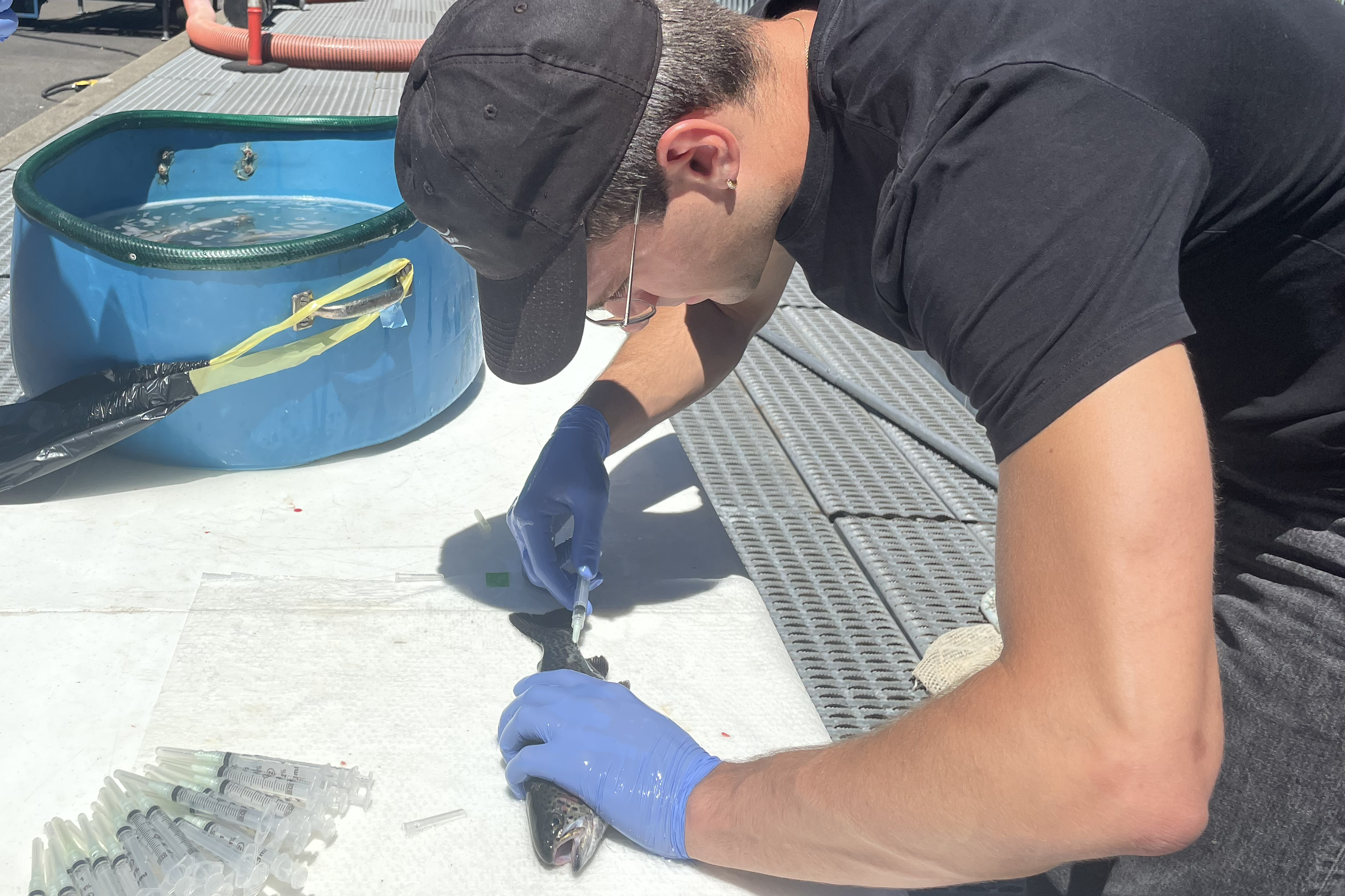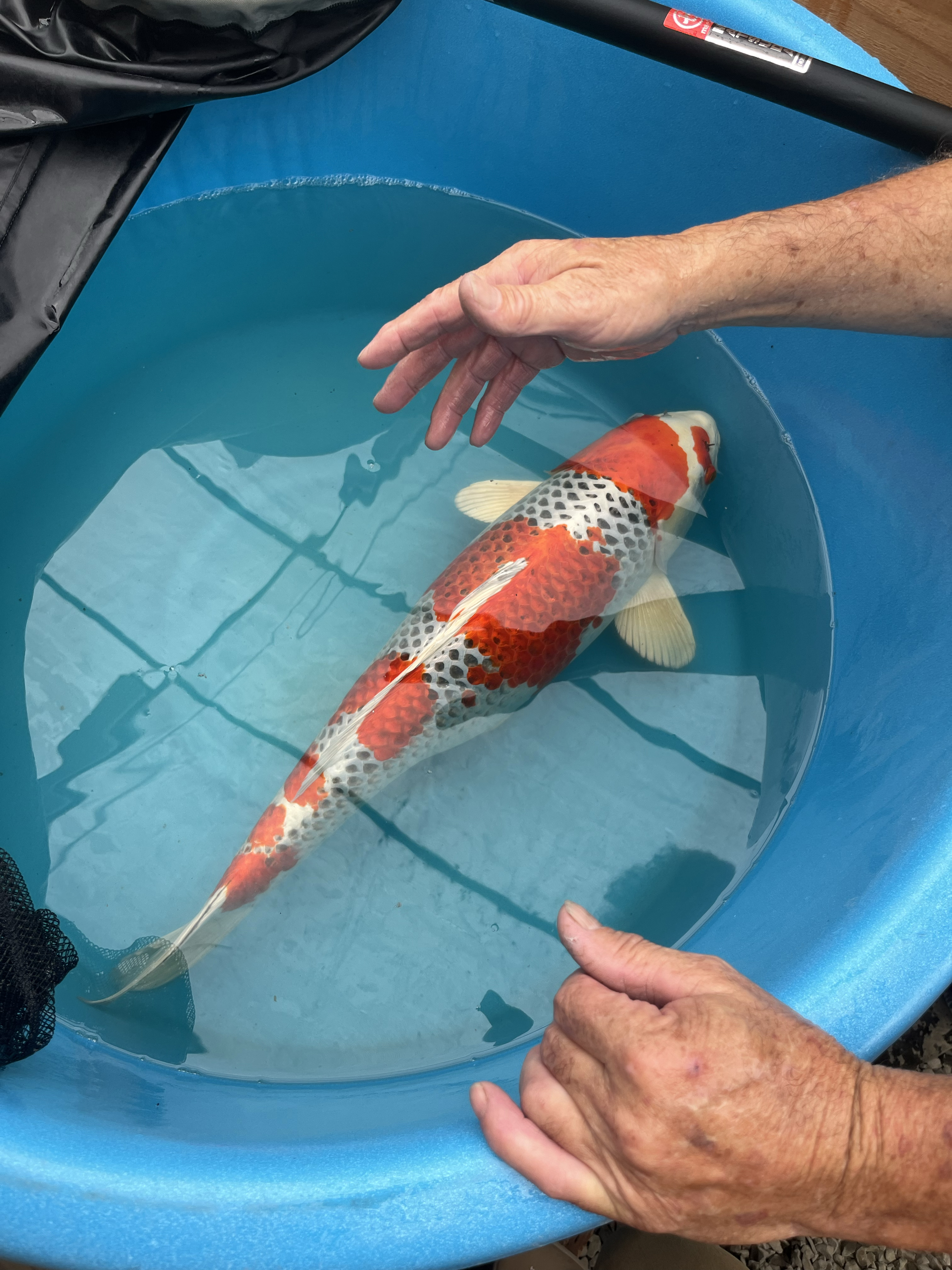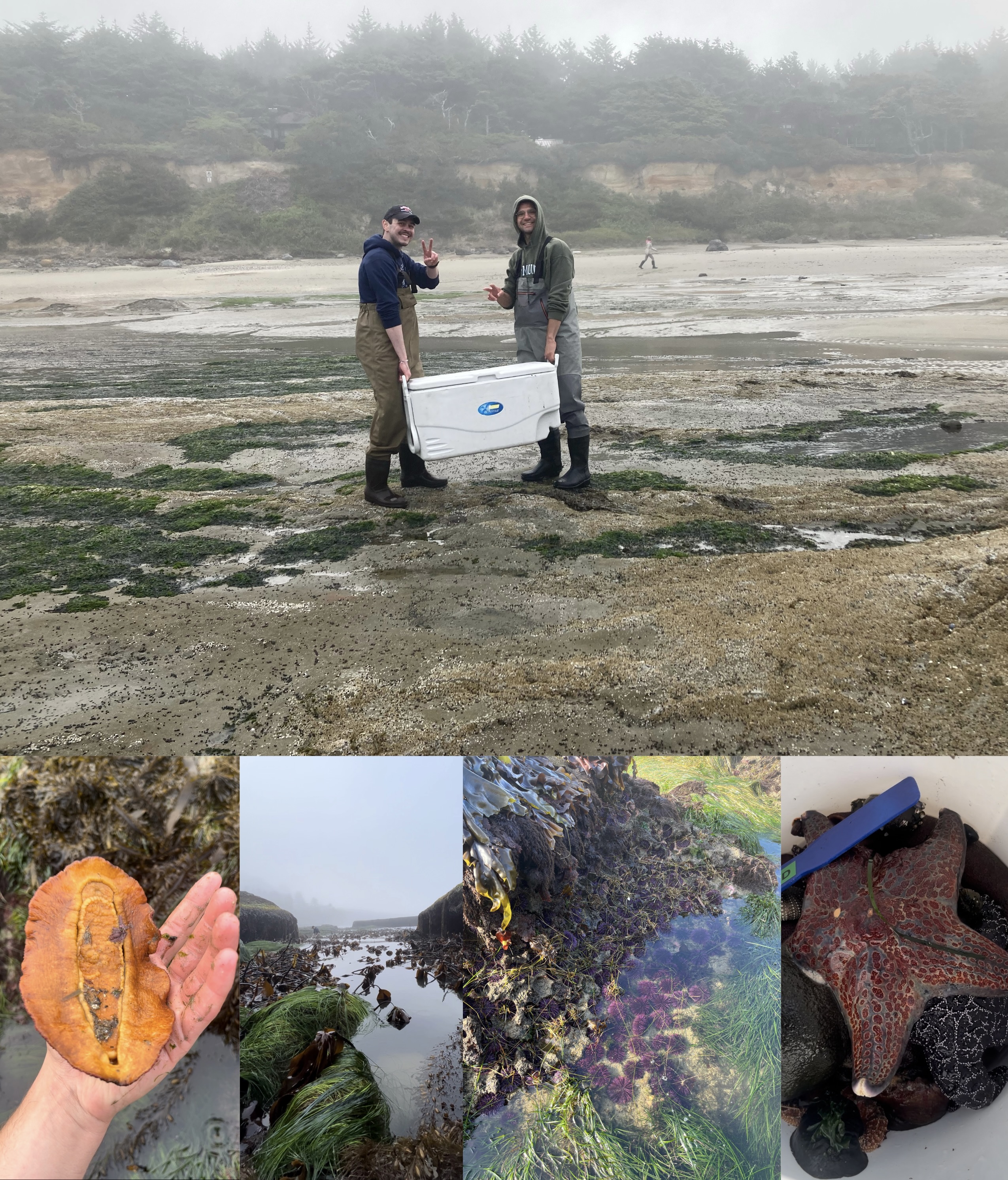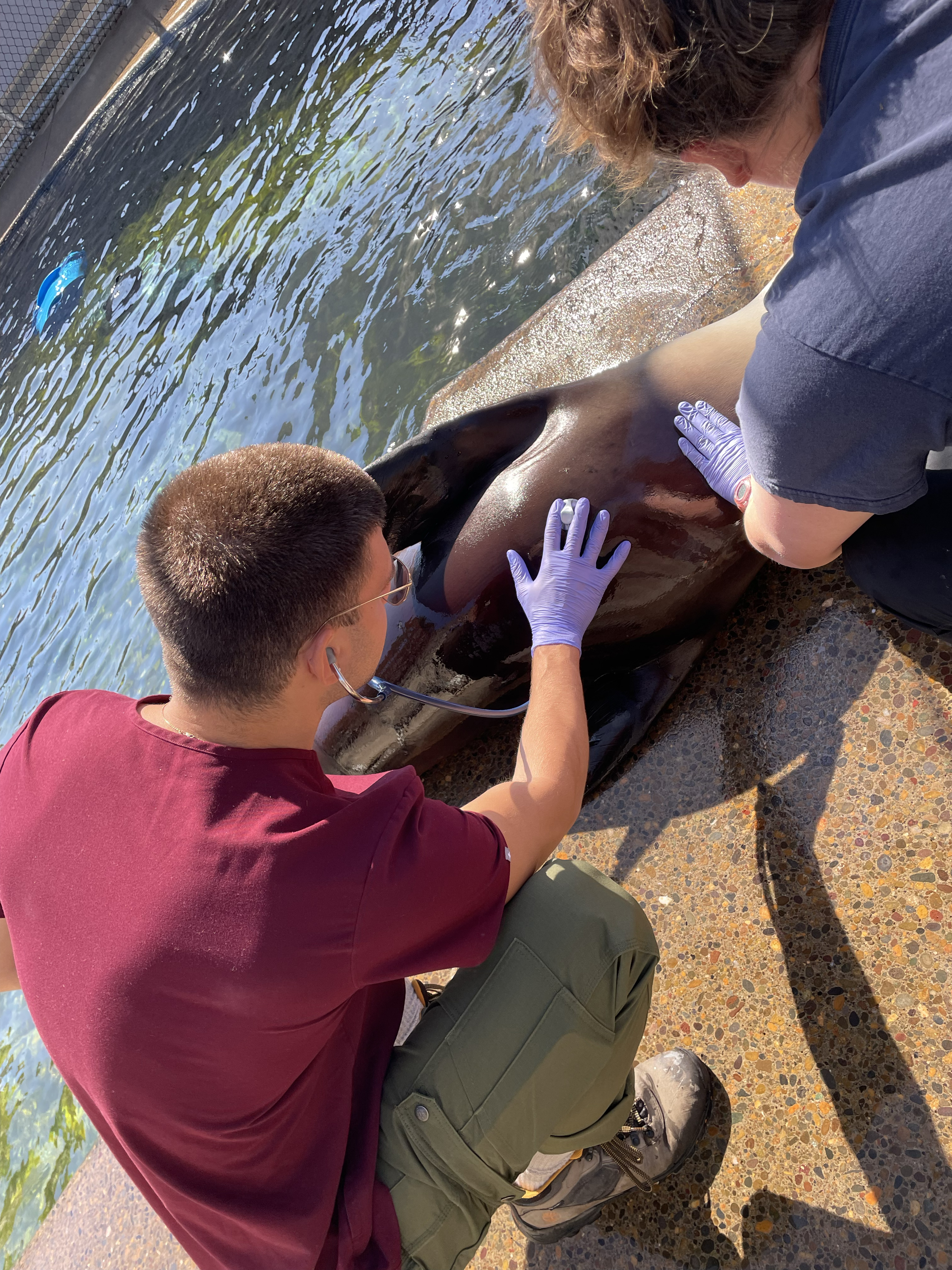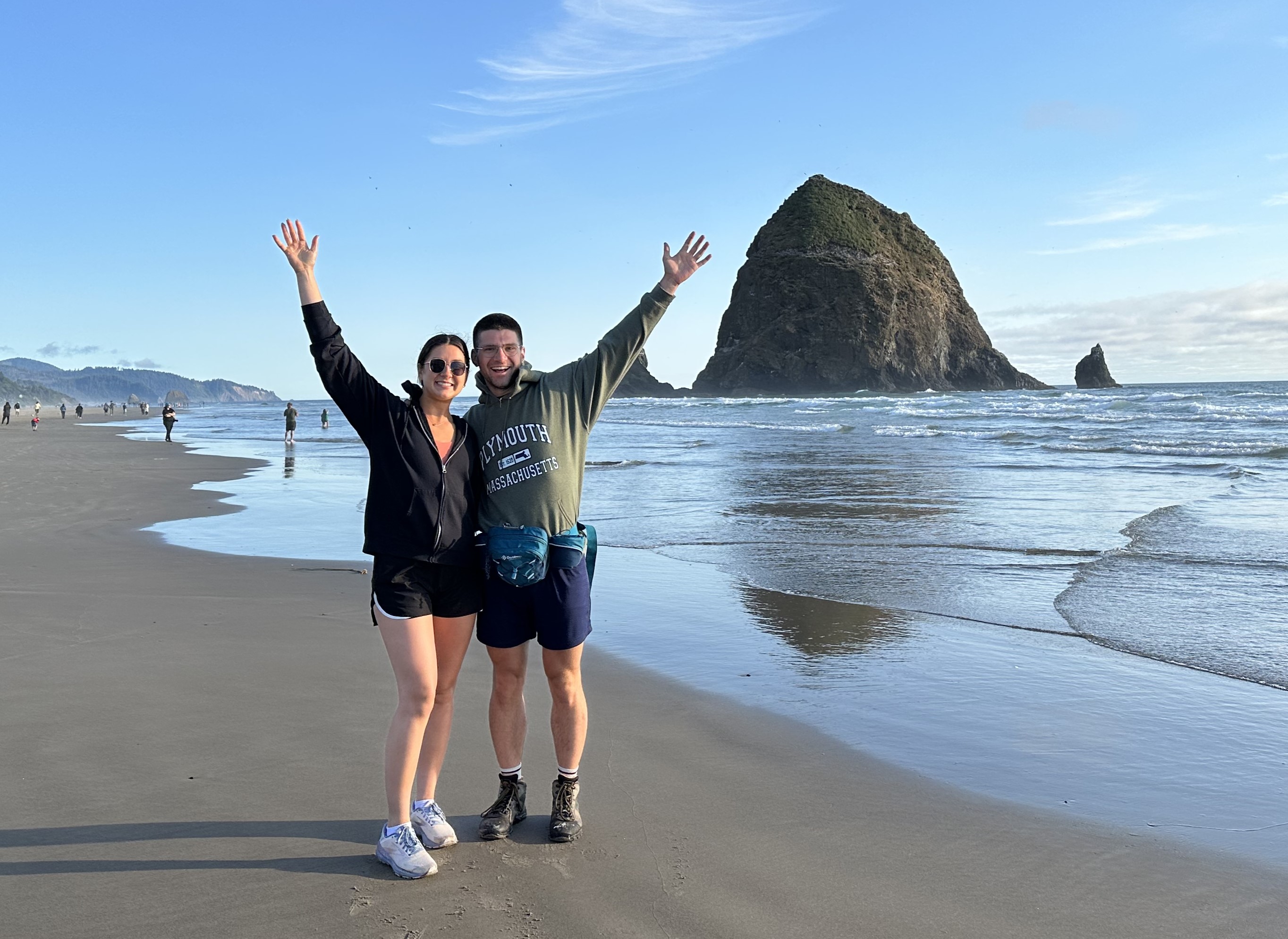My Summer Immersion in Aquatic Medicine in Newport, Oregon
By Adam Frosolone ’21, DVM ‘25
This summer, I embarked on an unforgettable journey into the heart of aquatic veterinary medicine with Dr. Tim Miller-Morgan at the Hatfield Marine Science Center (HMSC) in Newport, Oregon. The center is Oregon State University’s coastal campus, also serving as a marine science laboratory and an oceanographic research base for six state and federal agencies. This experience was made possible by the Cornell K. Lisa Yang Center for Wildlife Health Student Support Fund. Here are some of the highlights!
Ensuring the Well-Being of Pacific Northwest Fish: Health Checks and Gill Endoscopy
My adventure began by becoming familiar with the facilities at the HMSC and participating in routine health checks of the center’s collection of fish and invertebrates native to the Pacific Northwest. Before any of the organisms that arrived at the center were put into display tanks, they had to be quarantined and monitored for diseases. Using the same type of endoscope that a small animal veterinarian would use, I examined the gill arches of fish for any parasitic worms that may have been hiding in the gills. To examine fish gills using an endoscope, the fish must be sedated with an anesthetic agent called MS-222 that is added to the water to help make the experience as stress-free for the fish – and as useful for us – as possible.
At the center, I also learned how to manage life support systems and the nitty gritty of how water quality and chemistry affect the physiology and health of fish and marine invertebrates. This experience gave me a deeper understanding of aquatic medicine, as I had not fully understood how these variables affected aquatic animal health clinically until this point in my academic and professional career.
Safeguarding the Health of Show Koi: Quarantine and KHV Testing
During my time in Oregon, my team and I had the privilege of visiting a show koi import facility near Portland, where we helped the importer test his newly arrived fish for koi herpesvirus (KHV). This virus was first reported in Israel in 1998, but has since spread globally, causing devastating losses of carp species. Once this virus is introduced in a pond, it spreads and kills quickly, which is a significant problem for valuable koi collections. This is why it is so important to test these fish for KHV before they are shipped to their buyers throughout the Pacific Northwest. It was also fascinating to learn about the incredible attention to detail that koi breeders have in Japan when they select koi for conformation, color, and pattern. Indeed, there are koi shows just like there are horse shows and dog shows!
A Pacific Northwest Odyssey: Coastal Collection Days with the Kansas City Zoo
One of the highlights of my summer was spending collection days on the beautiful Oregon coast with dedicated staff from the Kansas City Zoo and Oregon Coast Aquarium. With the necessary permits in hand, we helped collect fascinating specimens for their exhibits designed to educate the public. At the same time, I gleaned all I could from the zoo and aquarium staff about the complex life histories of many of the species we found. As veterinarians, knowing the life history and husbandry requirements of the animals we care for is almost as important as learning about clinical medicine. If an animal is not kept in its ideal environment or properly cared for, then it will be at greater risk of disease and make our jobs as veterinarians even more difficult! Some of the creatures we encountered included purple urchins nestled in sponge-encrusted caves, a leather star, and the elusive gumboot chiton (a type of mollusk). We also had the opportunity to help safely prepare these animals for shipping, which was yet another valuable and exciting experience!
Fish Can Get Cancer Too: Celomic Ultrasound and Gavage of a Wolf Eel
At the HMSC, I had the opportunity to help perform a celomic ultrasound on one of the resident wolf eels that had been showing signs of anorexia. This particular fish was anesthetized with MS-222 so that we could ultrasound its body and examine its oral cavity to try to identify what was causing the anorexia. Wolf eels can sometimes go months without eating - their metabolism is so slow in the cold Pacific Northwest waters that sometimes they just stop eating for a while. However, this fish had stopped eating for a little too long, so we intervened to check for any abnormalities using ultrasound. The ultrasound exam revealed suspicious growths in its abdomen, so we decided to implement tube-feeding to ensure it had enough nutrition while we planned further testing.
Caring for Sea Lions and Seals: Marine Mammal Rounds at the Oregon Coast Aquarium
When I wasn’t working at the HMSC, I helped the team at the Oregon Coast Aquarium with fish, mammal, and bird rounds. I was able to assist with routine physical examinations of some of the aquarium’s resident California sea lions. These routine exams are conducted for similar reasons as those for dogs and cats at a small animal clinic – except these exams are often much easier to perform because the sea lions are all trained to present themselves in a way that helps us examine them quickly and easily. This makes the exam process much smoother for veterinarians, trainers, and animals alike! The relationship these animals have with their trainers is a beautiful thing to see, and the amount of teamwork that goes into their veterinary care is awe-inspiring.
Conservation Through Rainbow Trout: Oregon Salmonid Hatcheries
In addition to my experiences at the HMSC, I had the opportunity to spend a week with Dr. Aimee Reed from the Oregon Department of Fish and Wildlife (ODFW). During this week, we visited multiple hatcheries around Oregon and I was able to help draw blood from farm-raised rainbow trout to verify their sterility before releasing them into local waterways for anglers.
Oregon hatcheries play a vital role in stocking native salmon species and non-native rainbow trout, which generate funds for conservation through the sale of fishing licenses and also provide excess fish to local food pantries. Many native populations of salmonids rely on these hatcheries for breeding and reintroduction into the wild. These hatcheries also serve as hubs for public education and community outreach, particularly in remote areas of the state. The mindset of a veterinarian in clinical aquaculture medicine is similar to that of veterinarians in other production medicine fields, where animal health is primarily managed through enhancing husbandry practices and educating the hatchery staff on how to improve yield and animal welfare.
Key Takeaways from a Summer of Marine Discovery
My summer in Newport, Oregon was an incredibly broad and eye-opening experience, allowing me to step into the lives of veterinarians involved in so many different facets of aquatic medicine. This experience not only allowed me to practice and gain vital clinical skills while exposing me to a wide variety of aquatic medicine techniques, but it also gave me a complementary understanding of the skills and knowledge that an aquarist at any major aquarium needs to have. I came away from this experience with a more well-rounded view of aquatic medicine, developed many strong friendships, and learned valuable life lessons along the way.
A big THANK YOU to the team at the HMSC (Dr. Miller-Morgan, Sid, Trevor, Jamie), Dr. Aimee Reed at ODFW, and the staffs at the Oregon Coast Community College, Oregon Coast Aquarium, and Kansas City Zoo - as well as to the Cornell K. Lisa Yang Center for Wildlife Health Student Support Fund for making this opportunity possible!
Adam Frosolone, class of 2025, is a third-year veterinary student at the Cornell University College of Veterinary Medicine. He received a BS in Animal Science in 2021 from the Cornell University College of Agriculture and Life Sciences. While still open to exploring all areas of veterinary medicine, he has developed a keen interest in aquatic medicine, zoological medicine, and pathology.

